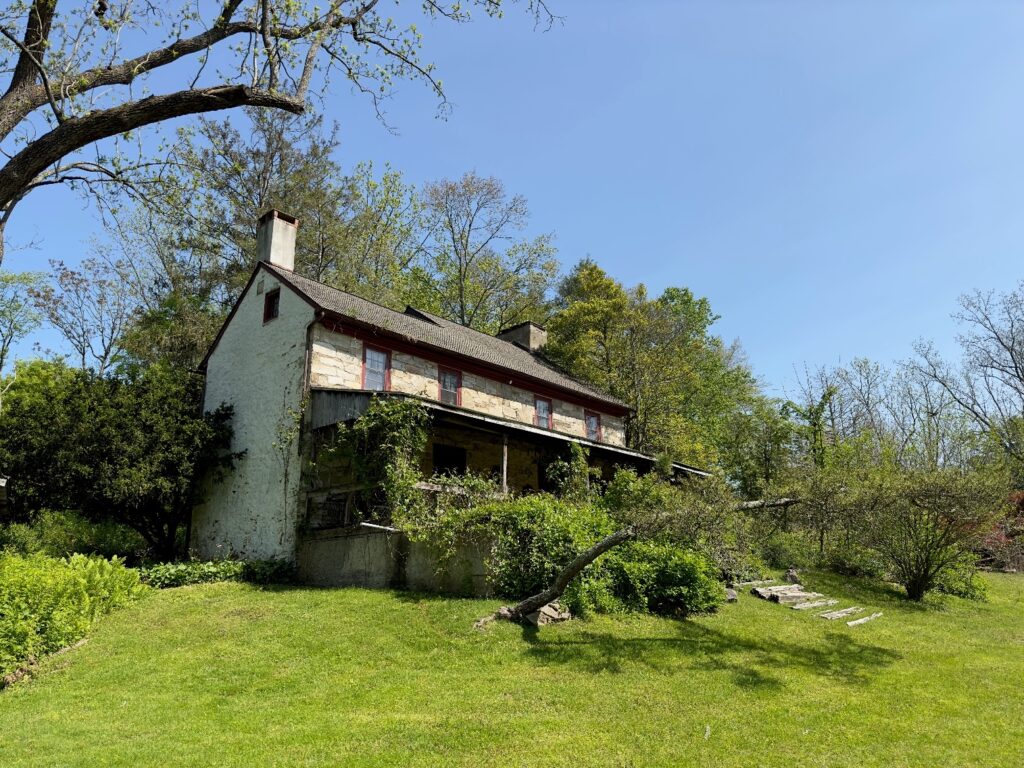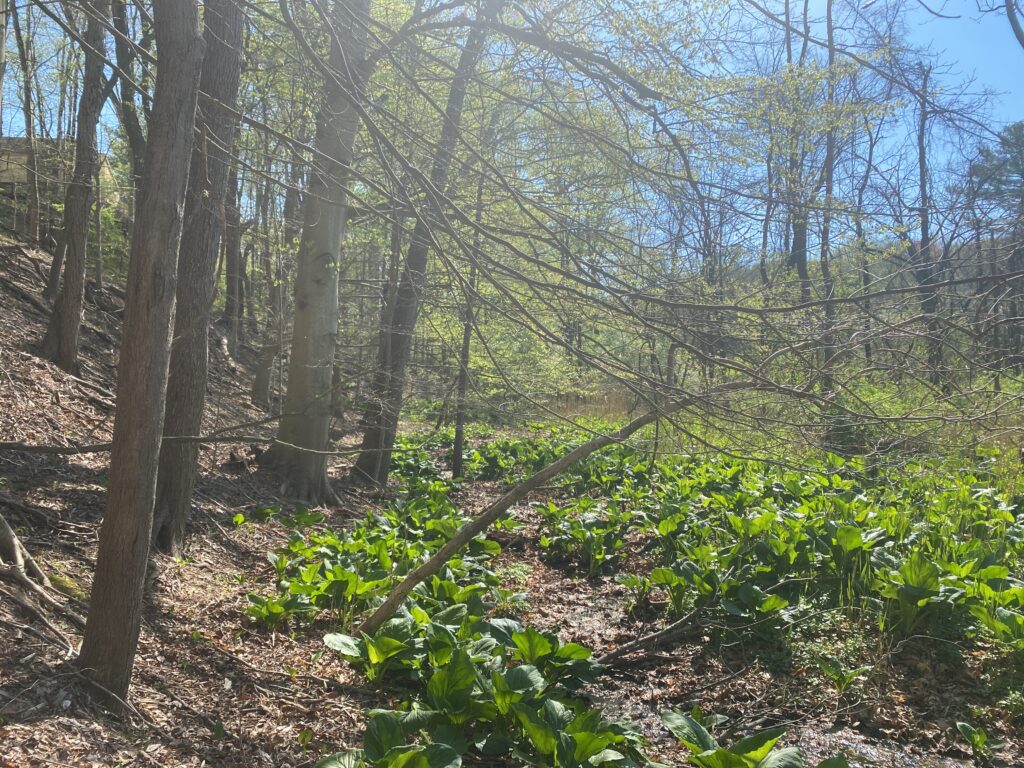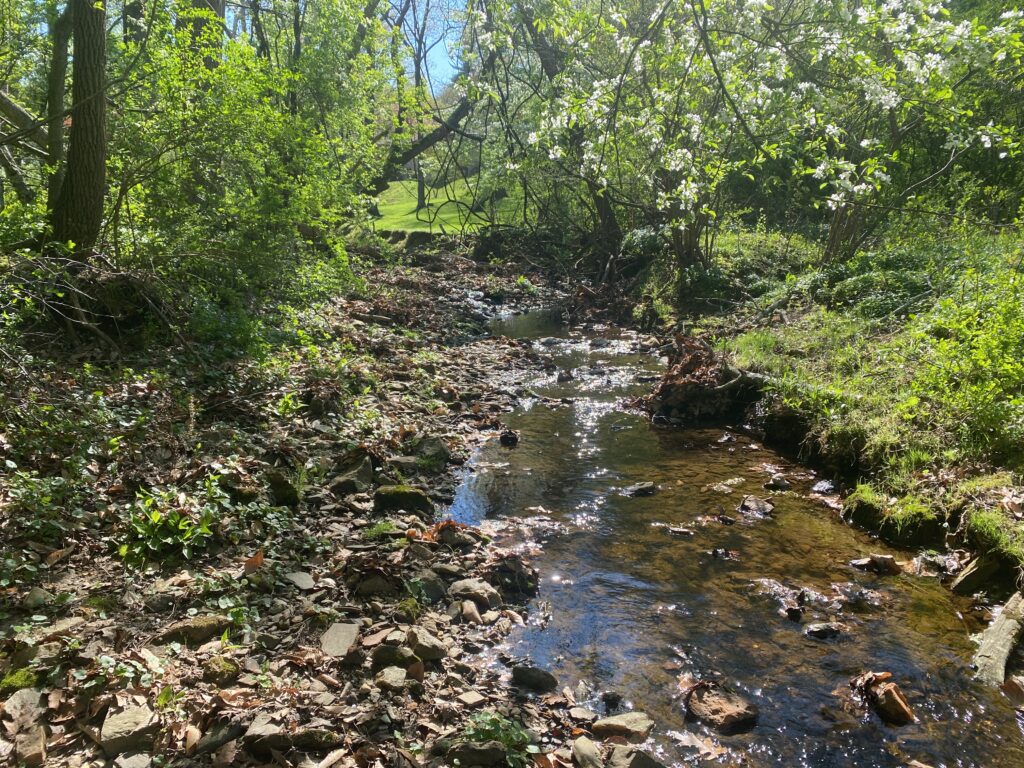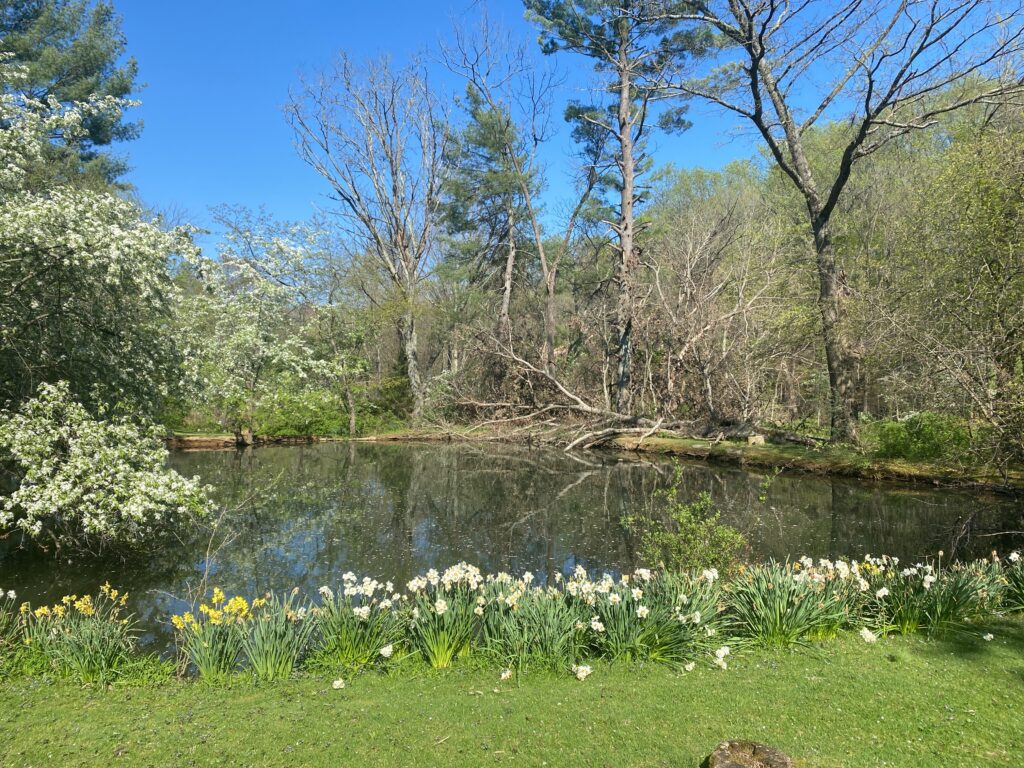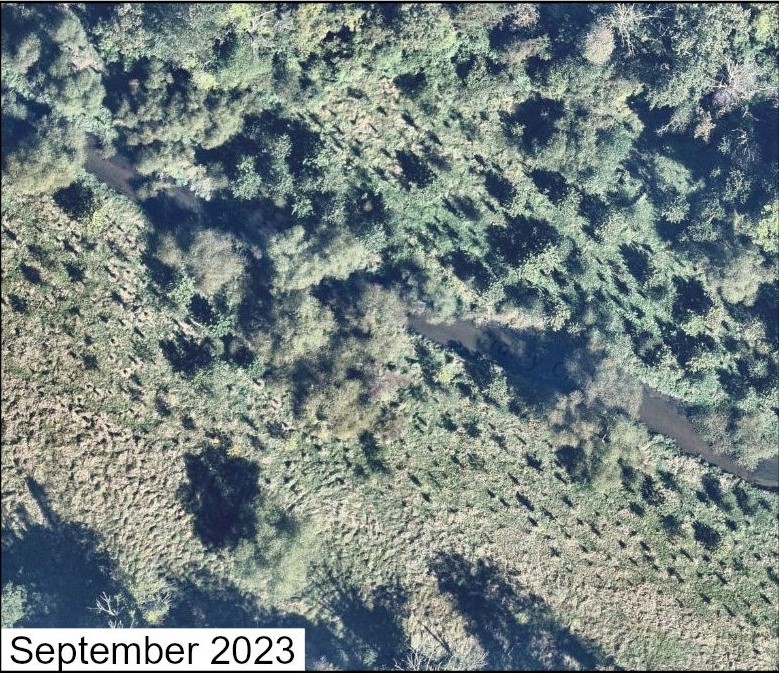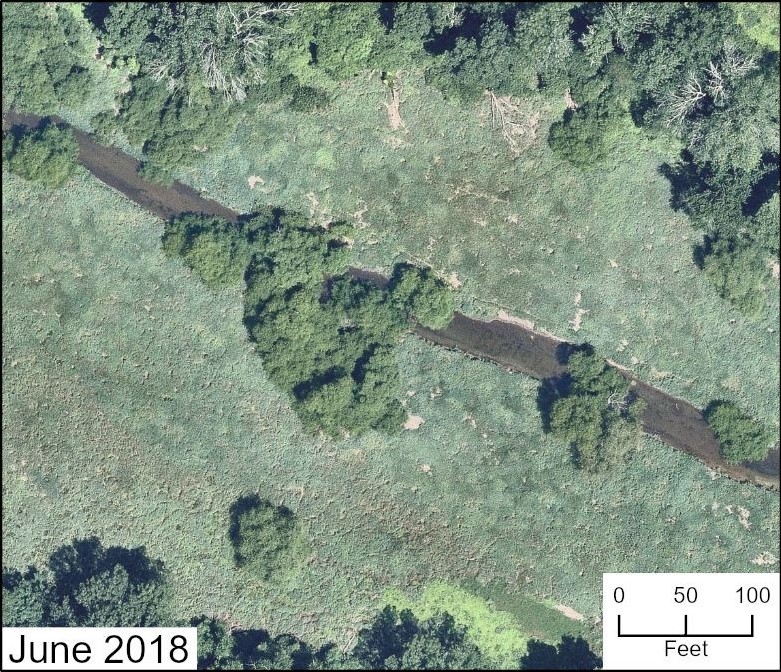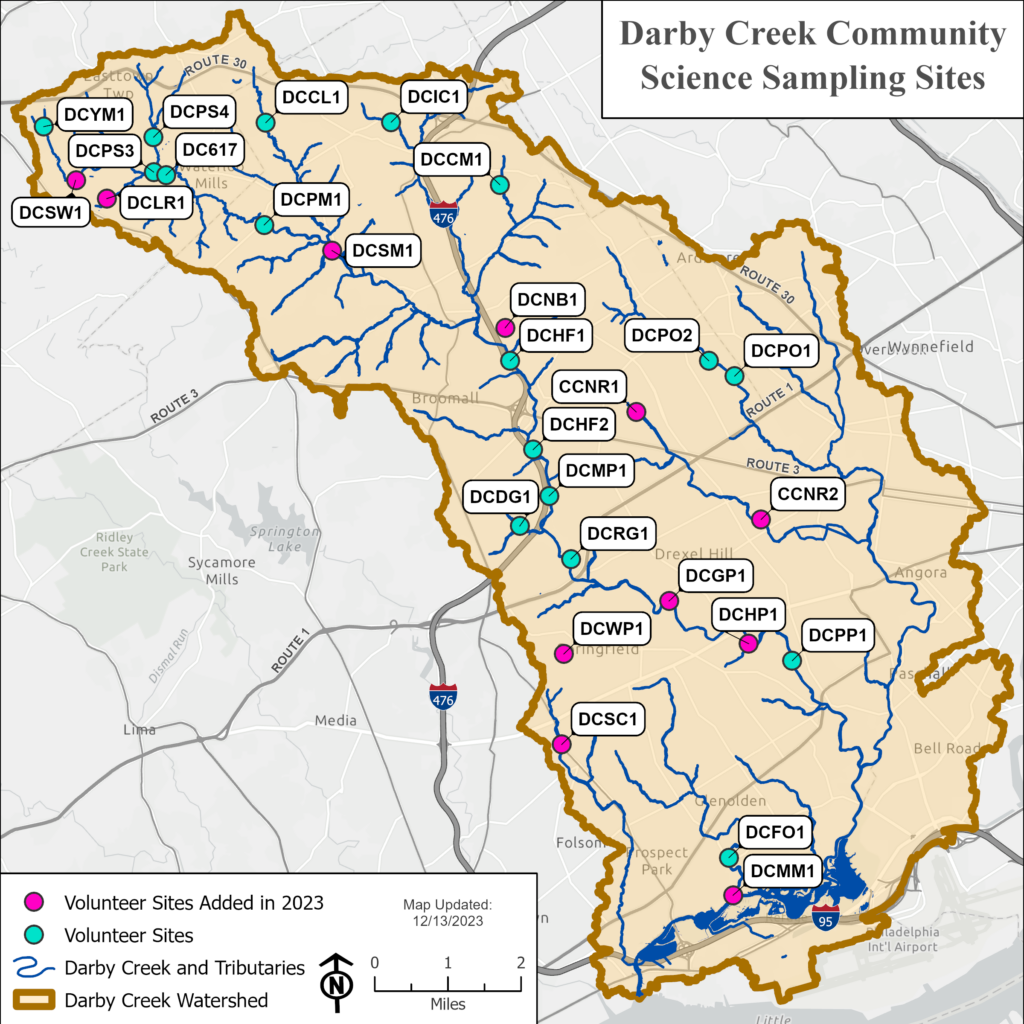By Andrew Wraith, Agroecology Project Coordinator
As an Environmental Studies student, you might have guessed that I’m a lover and keen observer of the natural world. I love looking closely and seeing what’s hiding in plain sight. It could be a beautiful little critter, a weird goopy-green fungus, or a tiny perennial flower that predates the tree canopy and gives clues to the history of a forest.
The natural world is full of lessons for those who take the time to pay attention and reflect on the eternal questions: What happened here, why, and what is this telling me? For example, the cool little critter might share an inspiring lesson on resourcefulness, and that green jelly fungus might teach us how to go with the flow. Every lesson is a treasure and an invitation to a deeper relationship with nature.
Rushton Farm is no different. We are working in a close relationship with nature. Here’s one of my favorite revelations from the past two seasons: the connection between farming and working with kids.
Experienced gardeners may be aware that it’s best not to take a seedling straight from the greenhouse grow mat and stick it out in the field to weather the elements. We don’t tell our kids once they can walk, “Now that you’re on your own two feet, it’s time you moved out and started supporting yourself”. The process we take our plants through at Rushton, from seeding to the field, closely mirrors children’s journey toward adulthood in our society.
It begins when we drop the seeds into the “seed flat” (an array of small wells in which we can plant up to 200 seeds at once). From there the seed flats go to rest on top of a heat mat, cozy and warm, and their journey begins. This is the “nursery” stage, a term used in both childcare and plant husbandry. As the seedlings emerge, they remain on the heat mat until they are ready to graduate to kindergarten, i.e., being taken off of the heat mats. In the greenhouse, they stay for a while learning elementary lessons, but mostly they’re busy growing up healthy. A full greenhouse is an exciting and high maintenance place to be. The needy seedlings require watering multiple times a day. Many plants require transplanting as they outgrow their old wear and prepare themselves for middle school. Those awkward tomato plants can be gangly, smelly, and pubescent at this stage.
Eventually, the day comes when they graduate to the high tunnel (the small greenhouse). Here they continue to be protected from the elements such as wind and rain, however, they are less insulated from the season’s changing temperatures, and learn to cope.
Right about the time when they start feeling like confident masters of their environment, they’re off to high school! High school for plants is outside of the greenhouse, where they finally feel the freedom of fresh air and direct sunlight, however, the transition can be tough as they learn to deal with the sometimes harsh weather and deer exposure. The plants can start to feel very antsy to get out of their seed flats, or transplanting pots and into the ground, where they can finally stretch out their roots. They can start looking a bit downtrodden, but before too long they’re on the move again and off to college!
It’s an exciting time when plants are going into the ground. To set them up well requires hard work! We take time to settle them in place and help them by setting up their dorm (placing metal hoops over the rows and insulating the plants with covers). The greenhouse can feel like a strange place as the season progresses, empty, yet full of memories. You hope that your seedlings are thriving, weathering the challenges, protected from groundhogs and deer, while being ready to help in times of need.
When the time comes to remove row covers it can feel like the plants are stepping out of a time machine – my how they grow up so fast! The farmers give them a few final weedings, and before you know it, they’re the ones supporting us and helping us grow.
At Rushton Farm, this successive process is referred to as “hardening off”. As with raising children, we expose the plants to greater pressures and freedoms resulting in strong plants. The majority of my professional experience has been working with kids and to my surprise I’ve found that many skills apply to both professions!


ANDREW WRAITH | Andrew has worked as an outdoor adventure camp counselor for over a decade, which sparked his passion for helping kids fall in love with the outdoors and the infinite adventure of natural experience. After graduating from Syracuse University with a Bachelor of Arts in Physics, Andrew headed west to pursue work as a hiking guide in the Santa Monica Mountains in addition to playing music in Los Angeles. He ultimately returned east and found his way back to working with kids in the outdoors at Germantown Friends School where he has served in many roles including Adventure Camp Director, After School Program team member, Environmental Action Club Leader, and Lower School Assistant teacher. He is a current graduate student in Environmental Studies at the University of Pennsylvania and is very excited to be joining the team at WCT.






